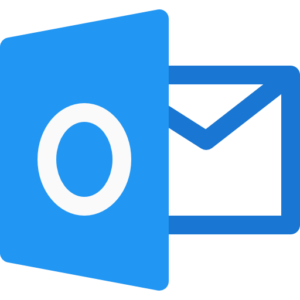Explore the Yahoo vs Gmail debate for 2025 email outreach. Discover which is the best PVA email for your campaigns, comparing deliverability, security, and integration options for optimal results.
In the fast-paced world of email marketing and cold outreach in 2025, success often hinges on choosing the right email platform. With inboxes more crowded than ever and spam filters growing increasingly sophisticated, your outreach strategy must start with a solid foundation your email provider. Among the most widely used and debated options are Yahoo vs Gmail, both of which support Phone Verified Accounts (PVAs). These PVAs play a critical role in boosting your sender reputation, ensuring higher deliverability rates, and providing added layers of security.
As digital marketers, entrepreneurs, and sales professionals compete for attention in their prospects’ inboxes, the choice between Yahoo vs Gmail becomes more than just a preference it becomes a strategic decision. Both platforms bring unique strengths to the table, but if you’re aiming to get the highest response rates and avoid being marked as spam, you need the best PVA email account for the job.
This article dives deep into the core differences between Yahoo and Gmail in the context of outreach, analysing key features like deliverability, security, user trust, and integration. Whether you’re launching a new cold email campaign or scaling an existing one, understanding which email provider offers the most outreach value in 2025 is essential. Let’s explore which option truly stands out as the best PVA email for your outreach success.
Understanding PVA Emails in 2025
In the world of outreach and email marketing, the importance of using Phone Verified Accounts (PVAs) has grown significantly in 2025. These accounts go through an extra layer of verification via a phone number, making them more credible in the eyes of email service providers and spam filters. Whether you’re using Yahoo or Gmail, having a PVA boosts your chances of landing in the inbox instead of the spam folder.
Why does this matter? Because deliverability is everything in outreach. If your emails aren’t being seen, your campaign won’t succeed no matter how compelling your message is. That’s why choosing the best PVA email provider is a critical step in any email strategy.
When comparing Yahoo vs Gmail, both offer PVA options that help build sender reputation and improve trustworthiness. However, the way each platform handles verification, filtering, and account behaviour varies making the choice between them more than just a personal preference. It’s a strategic decision that can directly impact your outreach performance.
In short, PVAs are no longer optional they’re a necessity for professionals, marketers, and businesses looking to scale effective email campaigns in 2025.

Gmail: The Powerhouse for Outreach
When it comes to outreach campaigns in 2025, Gmail continues to dominate the conversation. In the ongoing debate of Yahoo vs Gmail, Gmail consistently stands out as the more reliable platform especially when seeking the best PVA email solution.
Here’s why Gmail remains a top-tier choice for marketers and professionals:
- Exceptional Deliverability: Gmail’s infrastructure is built to support high email volumes while maintaining strong deliverability. Emails from Gmail PVAs are far less likely to be flagged as spam, particularly when accounts are properly warmed up and managed.
- Seamless Integration with Google Workspace: Gmail works hand-in-hand with essential business tools like Google Drive, Docs, Calendar, and Meet. This makes it easy to manage outreach, collaborate with teams, and track campaign activity all from one ecosystem.
- Robust Security Features: Gmail PVAs offer cutting-edge protection through two-factor authentication, AI-powered spam detection, and regular system updates. These features help maintain sender reputation and safeguard both the account and its recipients.
- High Trust Factor: Because Gmail is one of the most widely used platforms globally, recipients are more likely to recognize and trust emails coming from a Gmail address. This trust plays a crucial role in improving open and response rates.
✅ Ideal for: B2B sales outreach, cold email marketing, professional networking, and campaigns where deliverability is a top priority.
In the Yahoo vs Gmail comparison, Gmail continues to earn its place as the best PVA email provider for users focused on reach, reliability, and professional impact.

Yahoo Mail: An Underrated Contender
While Gmail often dominates the spotlight in email marketing, Yahoo Mail still offers valuable advantages especially for those looking to diversify their outreach strategy in 2025. In the Yahoo vs Gmail debate, Yahoo might not always be the first choice, but it shouldn’t be overlooked when searching for the best PVA email to expand campaign reach.
Here’s what makes Yahoo PVA accounts worth considering:
- Lower Saturation, Less Filtering: With fewer marketers using Yahoo for mass outreach, emails sent from Yahoo PVAs are less likely to trigger spam filters. This can lead to higher inbox placement in certain niches or industries.
- Improved Spam Protection: Yahoo has made notable improvements in its email filtering system and account verification process. These enhancements help ensure your PVA email maintains a solid reputation.
- Ample Storage & Useful Features: Yahoo offers a generous 1 TB of free storage more than enough for handling large volumes of outreach. While it lacks some of the deep integrations Gmail offers, it still supports essential email functionality and customization.
✅ Best suited for: Reaching audiences who may not be Gmail users, segmenting campaigns, bypassing Gmail-specific filters, and building a multi-platform outreach strategy.
When evaluating Yahoo vs Gmail, Yahoo PVA accounts may not be the default pick, but they can play a smart supporting role in a broader strategy. For anyone looking to find the best PVA email mix, Yahoo brings unique strengths that shouldn’t be ignored.

Yahoo vs Gmail: The PVA Face-Off
When choosing the best PVA email for outreach in 2025, it’s essential to compare how Yahoo vs Gmail stack up across the most important performance factors. Both platforms have their merits, but understanding where each one excels can help you align your choice with your outreach goals.
| Feature | Gmail PVA | Yahoo PVA |
| Deliverability | ⭐⭐⭐⭐⭐ | ⭐⭐⭐ |
| Integration | ⭐⭐⭐⭐⭐ | ⭐⭐ |
| User Trust | ⭐⭐⭐⭐⭐ | ⭐⭐ |
| Security | ⭐⭐⭐⭐⭐ | ⭐⭐⭐ |
| Spam Resistance | ⭐⭐⭐⭐ | ⭐⭐⭐⭐ |
| Ease of Setup | ⭐⭐⭐⭐ | ⭐⭐⭐ |
- Deliverability: Gmail leads the way with superior inbox placement, especially important for cold outreach. Yahoo is decent, but may not be as consistent.
- Integration: Gmail wins with seamless access to Google Workspace, making it ideal for productivity and CRM integration.
- User Trust: Gmail is widely recognized and trusted, which often results in better response rates. Yahoo, while still credible, lacks the same professional perception.
- Security: Both offer secure PVAs, but Gmail’s advanced spam filters and two-factor authentication give it the edge.
- Spam Resistance: Yahoo performs surprisingly well here, offering strong defences and benefiting from less usage by bulk senders.
- Ease of Setup: Gmail’s setup is slightly more intuitive, especially when integrating with other tools, but Yahoo remains a straightforward alternative.
In the Yahoo vs Gmail showdown, Gmail takes the lead for most professional outreach needs. However, Yahoo holds its ground in specific scenarios, especially when diversity in sending domains is important.
Which is the Best PVA Email for Outreach in 2025?
In the ongoing debate of Yahoo vs Gmail, Gmail continues to lead the way as the best PVA email option for outreach in 2025. Its unmatched deliverability, seamless integration with business tools, and strong sender reputation make it the go-to choice for professionals looking to maximize their email campaign performance.
That said, Yahoo PVAs still offer strategic value particularly for marketers seeking to diversify their sending domains or target specific audience segments. Since Yahoo accounts are used less frequently in bulk outreach, they may face fewer filters and provide a fresh channel for secondary outreach efforts.
To get the most out of your email strategy, it’s wise to use both platforms effectively. Use Gmail PVAs as your core outreach tool for high-impact campaigns, while leveraging Yahoo PVAs to reach niche markets or support volume-based strategies without overloading a single domain.
Ultimately, when comparing Yahoo vs Gmail, a hybrid approach may yield the best results combining Gmail’s performance with Yahoo’s flexibility to create a more resilient, scalable outreach system.
Final Verdict
In the ongoing Yahoo vs Gmail comparison, Gmail clearly emerges as the stronger contender for the best PVA email in outreach campaigns. Its superior deliverability, trusted domain reputation, and integration with essential productivity tools give it a clear edge for professionals aiming to maximize impact.
However, dismissing Yahoo entirely would be a mistake. Yahoo PVAs can still play a strategic role especially when diversifying sender accounts or targeting less saturated inboxes. In an era where email algorithms are increasingly strict, using both platforms can help you maintain sender credibility and expand reach.
To stay ahead in today’s competitive outreach landscape, consider a blended approach. Gmail should serve as your primary engine, while Yahoo acts as a reliable backup or niche outreach tool. In the Yahoo vs Gmail showdown, balance and versatility often outperform relying on a single channel.
FREQUENTLY ASKED QUESTION (FAQ)
- What is a PVA email?
A PVA (Phone Verified Account) email is an email account that has been verified using a phone number. This extra layer of verification improves the credibility of the account, reduces the chances of your emails being flagged as spam, and enhances deliverability rates, making it essential for successful outreach campaigns. - Why should I choose Gmail over Yahoo for outreach?
Gmail is generally considered the best PVA email provider due to its strong deliverability, robust security features, and seamless integration with Google’s productivity tools like Google Docs and Sheets. These features make Gmail ideal for professionals who prioritize high deliverability and efficient campaign management. - Can Yahoo PVAs still be useful for outreach in 2025?
Yes! While Gmail is the preferred choice for most marketers, Yahoo PVAs can be valuable in specific outreach strategies. They are less commonly used for bulk outreach, which means they may face fewer filters, making them a useful tool for diversifying sender domains or targeting less saturated markets. - What is the best way to use Gmail and Yahoo for email outreach?
To maximize results, use Gmail for your primary outreach campaigns where high deliverability and integration with other Google tools are essential. At the same time, incorporate Yahoo for niche outreach or as a backup to diversify your sender domains and avoid overloading a single platform. - How do I ensure my PVA email is effective in outreach?
To ensure your PVA email is effective, it’s crucial to warm up your account gradually, monitor deliverability, and engage in legitimate outreach practices. Avoid sending large volumes of unsolicited emails right away, as this can trigger spam filters. Maintaining a clean email list and using personalized messaging can also help improve your campaign’s success.
CALL TO ACTION
Ready to Boost Your Outreach Strategy?
Whether you choose Gmail for its reliability or Yahoo for its niche advantages, the right PVA email can make a world of difference in your outreach campaigns. Start optimizing your email strategy today!
Need help setting up your PVA email accounts or crafting the perfect outreach campaign? Reach out to us for expert guidance and personalized solutions tailored to your needs!









